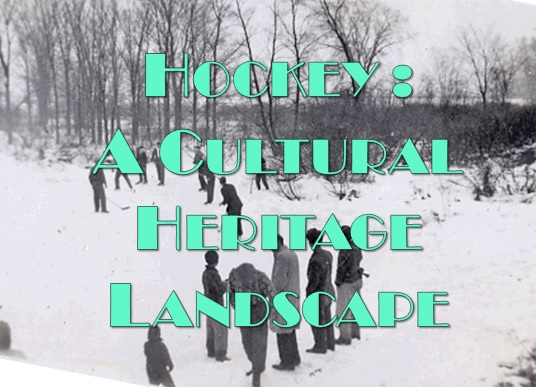Exploring Time: Considering Heritage as the Fourth Dimension of Environmental Assessment
The assessment of cultural heritage, including archaeological resources, built heritage, and cultural landscapes, provides an important historical perspective on past environments and human ecology. Heritage is also inherently predisposed to regional strategic EA approaches, given its fundamental concern with human landscapes, past and present. This presentation will explore various ways that heritage assessments can integrate […]
Policies, Regulations and Projects for Promoting Large Landscape Conservation
This presentation will focus on the intersection between regulations, guidelines and policies that help foster a culture of conservation by looking at the Credit River Valley in the Province of Ontario. The Credit River flows from headwaters above the Niagara Escarpment and drains down into Lake Ontario at Port Credit. It has, and continues to […]
Hockey as a Cultural Heritage Landscape

Hockey fulfills a lot of roles in Canada: It’s a sport, a past-time, a form of entertainment, and, frequently, a symbol for nationhood and identity. Hockey could also be recognized as an evolved continuing cultural heritage landscape, one that retains an active social role in contemporary society. The origins of hockey are very closely tied […]
The Future of Heritage in Ontario
Private sector cultural heritage evaluation, protection, and management in Ontario exist at the nexus of academic theory, legislative direction, and land-use planning. Heritage work in this context follows a conservation approach to mitigate the loss of identified resources due to urban and infrastructure development. Ideally, the process balances ‘expert knowledge’ with regular and protracted engagement […]
Blacker’s Brickworks: A Rare Insight Into the Local Manufacture of Bricks in the Latter Part of the Nineteenth Century
Hidden amongst a rural landscape rich in pre-contact archaeological sites, Edward Blacker and his sons operated a relatively short-lived, later 19th century brick works. Stage 4 archaeological salvage excavations of Blacker’s brickworks, located outside of Brantford, provided a rare opportunity to investigate brick manufacture in 1870s Ontario. This paper discusses how the topographic challenges of […]
“Removes All Obstacles”: The Place of Abortifacients in Nineteenth-Century Toronto

A bottle embossed with ‘Sir J. Clarke’s Female Pills’ was found during the excavation of the original location of Toronto’s first hospital, which opened in 1829 and was in operation at the corner of King and John Streets until 1854. Abortion was a frowned-upon and covert practice that was actively prosecuted. The discovery of a […]
Crocks or Pots? Relating Redware Vessel Forms to Folk Terms in Nineteenth-Century Ontario
This paper presents a type series for lead-glazed coarse red earthenware (or redware), a common artifact recovered from nineteenth-century sites in southern Ontario. Indeed, domestic potters produced a myriad of vessel forms that met the needs of rural consumers, who used the inexpensive redwares in food preparation, food storage and dairying on a daily basis. […]
A 21st Century “Kettle with One Spoon:” Indigenous Engagement Program for the York Region Archaeological Management Plan

The Region of York is undertaking an Indigenous Engagement Program in conjunction with theirArchaeological Management Plan. The Program has involved a number of Indigenous communities (Anishnaabe, Iroquoian and Métis) who have an interest in the Region’s archaeological record. The Region has taken key steps to ensure that there are no barriers to participation. From day […]
A Tale of Three Municipalities: Envisioning the Future through Indigenous Engagement

ASI has been involved in the Indigenous engagement process for numerous municipalities going through various stages of planning including the City of Regina, the District Municipality of Muskoka and the Regional Municipality of York. Despite differing circumstances, the Indigenous communities were asked about their overall vision for the respective municipalities, or more accurately, their traditional territories, […]
Collaborative and Innovative Heritage Impact Assessment for Highway 407 East: Archaeology, Built Heritage, Cultural Landscapes
For the last decade, ASI has been involved in the impact assessment of Highway 407 East with respect to archaeological heritage. It is arguably the largest and most complex archaeological assessment and mitigation project ever undertaken in the Province of Ontario. From our perspective, the primary factor responsible for the on-going success of this fundamentally […]


